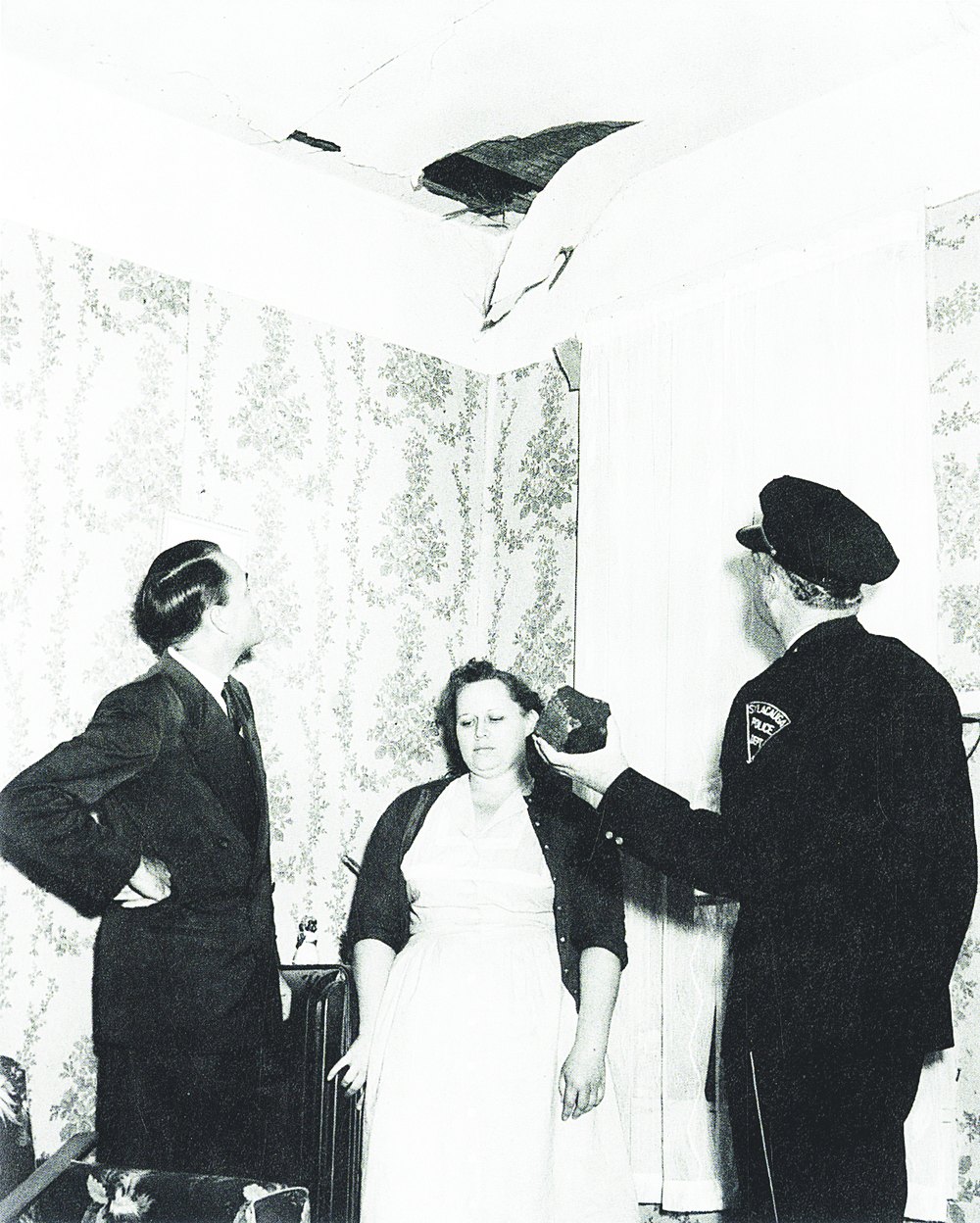

Edited and designed with precision, restraint and a depth of thought rare in photography today, Regine Petersen's FIND A FALLEN STAR ( Kehrer, 49.90 euros) consists of three slim photo-books, and a booklet of notes and an essay (by Natasha Christia), in an elegant slipcase. Together, they make up an unpretentiously profound, learned yet lyrical study of how human lives are changed in an instant by what may be called cosmic accidents. Petersen, born in 1976 in Hamburg, remains abidingly interested in how individuals, families and communities, in various parts of the world and periods of history, have been affected by the fall of meteorites, and in the aftermath of these strange, often catastrophic, but also quotidian, events. For Petersen, who wanted to be an explorer, astronomer and paleontologist as a child, meteorites are like "time capsules" that may have remained unchanged since the formation of the sun. They are "agglomerates of the earliest dust, and in a way their interior is like an ancient photograph". But her thinking and feeling into, and around, these pieces of star take this body of work beyond a mere typology of astral debris. Her meteorites become "geological, astronomical, but also historical and emotional objects" in this set of books.
The larger questions, as Petersen evolves different creative and documentary approaches to her subject, are: What is an event? When and where does it stop happening? How does photography record both the momentous and the ongoing nature of human events? What else does photography need to understand and represent the complex and diverse nature of events, and their material, cultural and metaphysical implications? What is the relationship between the lives of others and the compulsions of an individual artist? Petersen explicitly articulates none of these questions. They unfold gradually and implicitly through the range of materials - her own and archival photographs, newspaper clippings, witness testimonies, and other personal and official documents - that she gathers in these volumes, and in the empty, but quietly suggestive, gaps she leaves in her visual and verbal narratives. So, Wallace Stevens's "Thirteen Ways of Looking at a Blackbird" meets Lars von Trier's Melancholia in the spirit of these volumes - with a touch of Calvino's Cosmicomics.
The first volume, Stars Fell on Alabama [from the Billie Holiday/Doris Day song]: Sylacauga, 1954, goes into the stories of Ann Hodges, a white middle-class American housewife injured by the Sylacauga meteorite when it fell through the roof of her Alabama house in 1954, and of the black farmer, Julius McKinney, who came upon a fragment of the same meteorite the next day. Ann [top] donated the rock to the Alabama Museum of Natural History a couple of years later, but it precipitated a "nervous breakdown" in her, from which she never recovered. "She never was the same person," recalls her husband. Both are dead now. McKinney, however, managed to have his fragment sold to the Smithsonian Institution for a sum that helped him buy a car, a new house and land. The second volume, Fragments: Ramsdorf, 1958, is about the fall of a meteorite in the town of Ramsdorf in Germany, in 1958, and how the fall was witnessed by a group of children, the rock broken and divided among them, and then reassembled by the father of one of the children, and how, after many years, these children, or those among them who are still alive, recall, with significant variations, the different, and often somewhat obscure, motivations behind the finding, keeping and giving away of the meteorite. The third volume, The Indian Iron: Kanwarpura, 2006, is set in India, where a meteorite fell in 2006, near the atomic power plant in Rajasthan. It was mistaken as a Pakistani bomb by a couple of terrified shepherds who reported it to the police. But at the heart of this volume is the mythic splendour of the Lonar crater-lake in Maharashtra (the Earth's largest), and the stone gods [ below] and monkeys who watch over this "negative image" of a gigantic meteorite.











